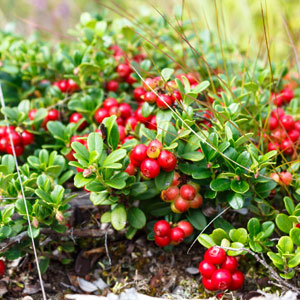

- Lingonberry plants near me how to#
- Lingonberry plants near me full#
- Lingonberry plants near me free#
In this case, peat moss will make the dirt more acidic, precisely what your plants want for ideal growth. I typically use a soil mix that is a blend of compost, peat moss, and sand. Before planting, make sure to add organic matter into the soil, such as compost, well-rotted manure, or leaf mold.
Lingonberry plants near me free#
These plants prefer to grow in fluffy, loose soil, free of any rocks or debris that might block the root growth. We use the same stuff on our homegrown cranberries and blueberries too.īefore planting, you have to prepare your garden beds, turning the soil to a depth of 6-12 inches. We tend to lower the pH and feed at the same time by using a granular fertilizer for acid-loving plants called Holly Tone. If your soil is too neutral or alkaline, garden sulfur is one way to lower the pH range. These plants grow best with a soil range between 4.2 to 5.2. Before planting, it’s best to check your current pH range and adjust however you need.

One thing that is different about lingonberry plants is that they prefer to grow in very acidic soil.
Lingonberry plants near me full#
They also grow well in partial shade, but full sunlight encourages larger crops. Lingonberry plants grow best when you pick a location with full sunlight these plants enjoy ample sunlight, averaging six to eight hours per day.

Lingonberry Blossoms in my garden Where to Plant Lingonberries Not only do they produce edible, delicious berries, but the springtime blooms are bell-shaped flowers in white or pink that bees love. We’ve been growing lingonberries for a few years now, and they’re a lovely addition to our berry garden. They grow well in our climate, and since they’re low maintenance, they do well in our permaculture garden. Living in Vermont, we are often limited due to our cold temperatures, but lingonberries are a cold-hardy plant.
Lingonberry plants near me how to#
Unfortunately, you won’t find these berries growing wild here in the US, so with a bit of patience, learning how to grow lingonberries at home is easier than you imagine. In Sweden and Norway, lingonberries grow in the wilds, thriving in the woodlands and moorlands. Those chill hour requirements are the same for most blueberry varieties, which also require cool winters and a dormant period to thrive. The plants are known to survive in temperatures as low as -50℉, and they require a minimum 800 chill hours to produce berries. Unlike many other berries, lingonberries thrive in cold temperatures. These plants spread an average of 9 to 12 inches during the first few years after planting. They’re a low-growing perennial plant that grows on a woody shrub that grows 12-16 inches high, and spreads through underground runners or seeds. These berries are much sweeter and have virtually no astringency. These berries are closely related to cranberries and blueberries, producing large amounts of small red berries with a flavor similar to cranberries. Lingonberries are often called cowberries, lowbush cranberries, or whortleberries. Lingonberries, on the other hand, are really easy to grow! What are Lingonberries? I’m still looking for a source for crowberries and cloudberries, which have somewhat specific requirements and can’t really be cultivated. Not to be deterred, we’ve started growing and raising ingredients for Nordic recipes on our own. This year I’ll be curing lamb ribs for Pinnekjøtt, so that shows you I’m not afraid of a challenge. With her at the helm, I never really had to focus on Scandinavian delicacies because she kept us well supplied.Ī few years ago when she past, I started cooking more traditional Scandinavian food and found it really difficult to source specialty ingredients. My Norwegian grandmother was always the best baker in the family, and every year she’d decorate our holiday table with literally dozens of varieties of Norwegian Christmas Cookies. While they’re somewhat similar to cranberries, they taste much sweeter and are perfect for fresh eating right in the garden. Lingonberries plants are easy to grow, hardy perennial fruiting shrubs that taste great fresh or in preserves.


 0 kommentar(er)
0 kommentar(er)
